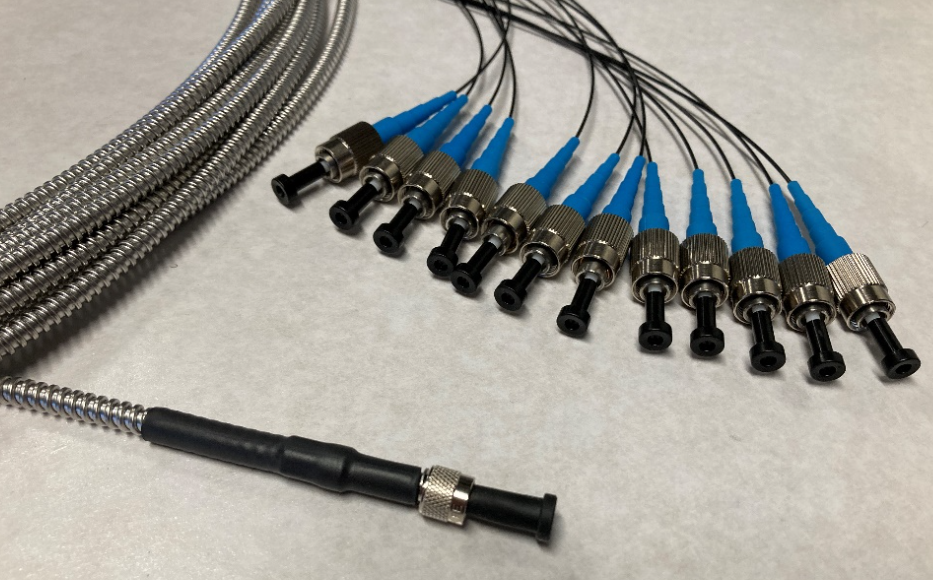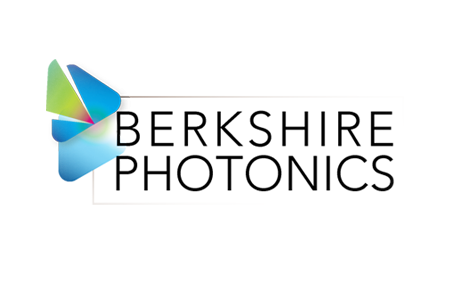Home » Product Categories » Fiber Optic Bundles
Fiber Optic Bundles
Fiber optic bundles are assemblies of optical fibers bundled together in a specified configuration. Fiber optic bundles can be used to connect instruments to remote sensors, to distribute light from a single source to multiple locations or (the reverse), to carry light signals from multiple locations to a single receiving point. They are indispensable as probes in spectroscopy applications.

Fiber optic bundles often contain multiple different fiber types. Single mode fibers may be mixed with multimode fibers. They may include fibers optimized for different wavelengths, fibers of different core sizes, different cladding types, etc. An endless array of combinations are possible.
The number of fibers in a fiber optic bundle can vary widely, from just a few fibers to thousands. They may be arranged in a random configuration, or mapped to specific positions in a linear or two-dimensional array.
Fiber optic bundles can take on various configurations. In their simplest form, a bundle may consist merely of multiple fibers “bundled” together randomly, with identical terminations on each end. In a “bifurcated” assembly, multiple fibers are grouped together at one end, and then separated into two branches along the bundle’s length, with one or more fiber(s) going into “Leg 1” and the others into “Leg 2”. A trifurcated assembly splits into three branches. And so on.
In a “fanout” assembly, all the fibers are grouped together on the common end, and then “fanned out” into individual legs.
Fiber optic bundles may feature only lightweight furcation tubing as protection for the fibers if they are intended for use in the laboratory or other benign environments, or be built with ruggedized tubing and sheathing, making them suitable for use under harsh conditions.
Additional elements may also form a part of a fiber bundle. The diagram below depicts a custom two-fiber assembly with a vacuum feedthrough designed, assembled and delivered by Berkshire Photonics. It’s purpose is to ferry signals from inside a vacuum chamber to diagnostic equipment in a laboratory, allowing researchers to monitor and control a chemical process that can only take place under vacuum.

Applications
Medical Imaging: Fiber optic bundles are used in medical endoscopy and minimally-invasive surgery procedures. The flexibility and maneuverability of fiber bundles allow them to be inserted through the body’s natural openings or small incisions so physicians to visualize locations of interest inside the body.

Spectroscopy: Spectroscopy is the study of how light interacts with matter. Generally, light must be brought to the matter being investigated, and the absorbed, emitted, or scattered light must be brought to a detector for analysis. Fiber optic bundles are used as probes and are key to numerous spectroscopic techniques. They are valued for the efficiency with which they transport light to and from the item under study, and for the flexibility they enable. A fiber optic spectroscopy probe may have as few as two fibers, or it may have hundreds or thousands, arrayed in random patterns or in specific configurations.
Scientific Research: Fiber optic bundles find use in basic science research to collect optical energy from samples or gasses, and transmit them to scientific instruments like spectrometers, analyzers, etc. Fiber optic bundles are often the most efficient, and in some cases the only way to gather reflection or absorption spectra from remote targets.
Process Monitoring and Remote Sensing: Fiber optic bundles are employed in industrial, production and manufacturing environments to monitor process parameters in real time. The ruggedness and durability of glass fibers make them well-suited to operation in harsh environments. They are widely used in chemical, pharmaceutical and refining operations.
By their very nature, fiber optic bundles are almost always custom-tailored for specific uses, so please Contact Us at 860-868-0081, or fill out the form above and tell us what you need. A drawing, anything from a hand-drawn sketch to a detailed CAD file, is always helpful.


